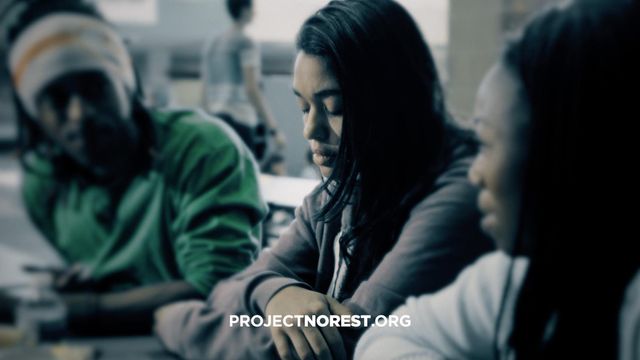Ending human trafficking requires everyone's support
This story was written for our sponsor, Project NO REST and the University of North Carolina. Learn more about the issue of human trafficking on the Project NO REST website at http://www.projectnorest.org/.
Chances are that when asked to describe human trafficking, most would describe it as something that happens in a foreign country, a seedy motel or in the back alleys of a big city.
They might imagine the traffickers themselves only as stereotypical criminals or caricatures of pimps.
Robin Colbert, assistant director of the North Carolina Coalition Against Sexual Assault, said that is a misconception. Human trafficking, in the form of both labor and sex trafficking, can happen in our own neighborhoods and communities, and traffickers can be average community members, parents, students and friends.
"As with most predators, traffickers groom unsuspecting victims by promises of love or a better life," Colbert said. "Although victims are representative of all aspects of our society, many victims are fleeing lives of abuse, economic instability and unworthiness."
She added, "Traffickers prey on these emotions and fears to trap victims in a life of subjugation."
According to the National Human Trafficking Hotline, human trafficking happens with alarming frequency in North Carolina; N.C. is ranked among the top 10 states in the cases of human trafficking reported.
Colbert pointed out that combating human trafficking in the state requires the support of the whole community.
Recognizing Human Trafficking
Survivors of human trafficking can be difficult to spot, because they might be anyone -- a neighbor, a student in your class or a patient at the hospital.
Some common characteristics of survivors include:
- The survivor may not be able to speak for his or herself, and may be with someone that speaks for them, controls the conversation and what is said, or does not allow him or her to be by themselves.
- He or she may be showing signs of isolation or inability to communicate.
- He or she is not free to come and go, and may have someone with them at all times.
- He or she works long or unusual hours, is paid very little or paid cash under the table.
- He or she does not have their own bank account or control over their own money, or is trapped in debt to their employer that they are unable to work off.
- He or she may have a fearful demeanor.
- He or she may have few, if any, clothes or possessions.
- His or her documents may be held by a third party or their employer, or they may not have access to their documents.
- He or she may exhibit anxiety, particularly around the subject of law enforcement.
- He or she may have poor or deteriorating mental and physical health and may show signs of physical and sexual abuse.
- He or she may not know where he/she lives or where they are, or are unable to provide details about living arrangements.
- Anyone under 18 being made to provide sex acts in exchange for money, goods, services or other benefits.
Teachers are in a unique position to recognize and respond to human trafficking when it occurs in schools, said Cynthia Fraga Rizo, an assistant professor at the School of Social Work at the University of North Carolina at Chapel Hill.
"Youth involved in trafficking may still attend school, and this might be one of the few settings where the youth's trafficker is not present," Rizo said.
"The U.S. Department of Education," Rizo said, "points out that the entire school community -- including administrators, teachers, bus drivers and other personnel -- can help ensure schools are a safe place for students by enhancing their own awareness of human trafficking in order to identify high risk students, and connect them to needed services and resources in the community."
Some of those signs may include:
- Academic disengagement
- Below-grade level performance or sudden decline in academic performance
- Avoidance of eye contact or physical touch
- Gaps in memory
- Signs of abuse (such as bruises or scars)
- Malnourishment
- Drug and alcohol addiction
- Low self-esteem
- Depression
- Anxiety and fear
- Anger problems
- Older boyfriends or girlfriends
- Having a sexual online identity
Doctors and health care professionals are also in a unique position to spot human trafficking when it happens.
Some specific signs that health care providers are able to spot include hidden bruises, scars or burns, no access to health insurance, malnourishment, and tattoos that mark the survivor as the property of a pimp or a trafficker.
To report a case of human trafficking or reach out for help today, call 1-888-373-7888 or Text HELP to: BeFree (233733).
This story was written for our sponsor, Project NO REST and the University of North Carolina. Learn more about the issue of human trafficking on the Project NO REST website at http://www.projectnorest.org/.











